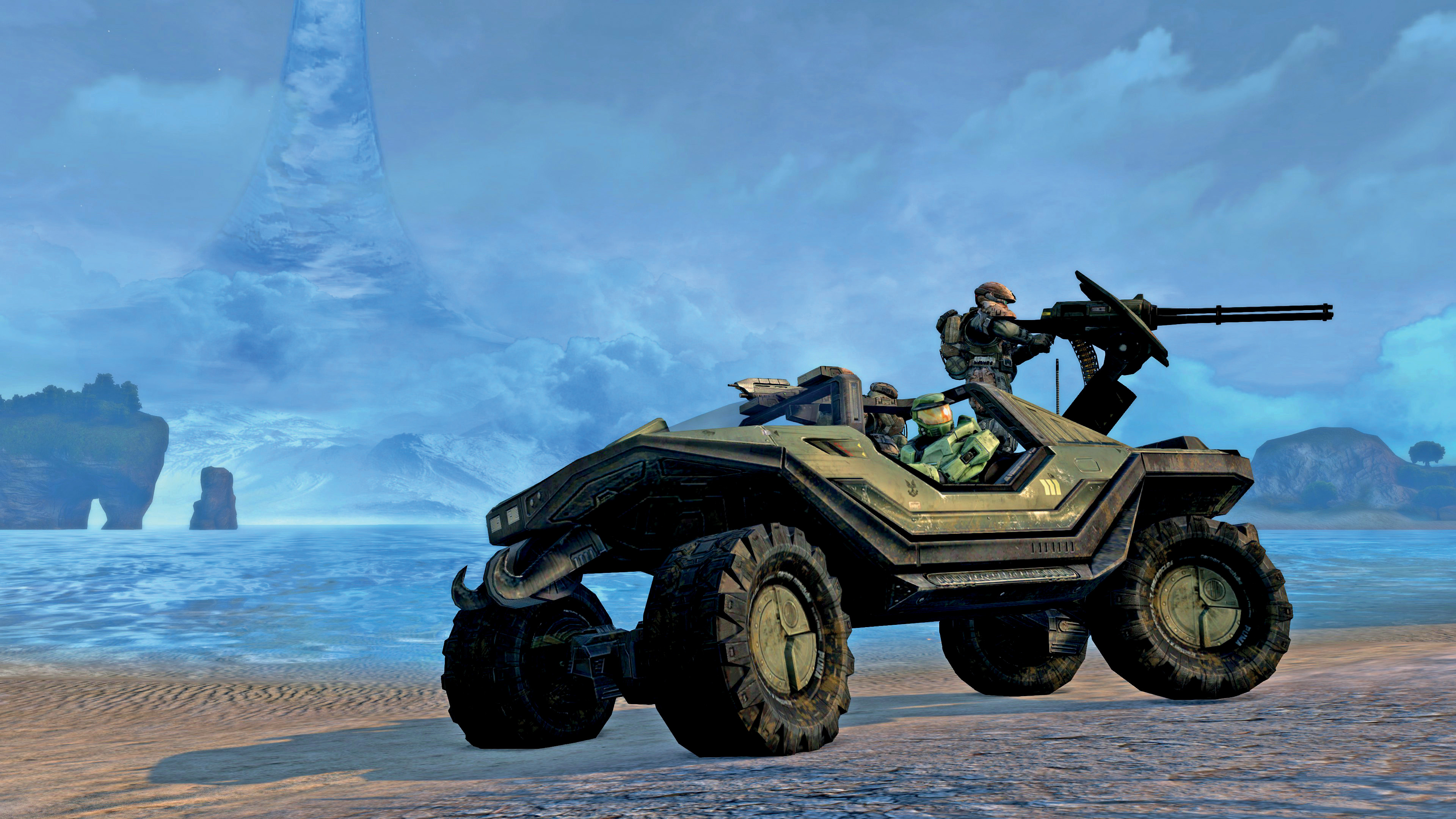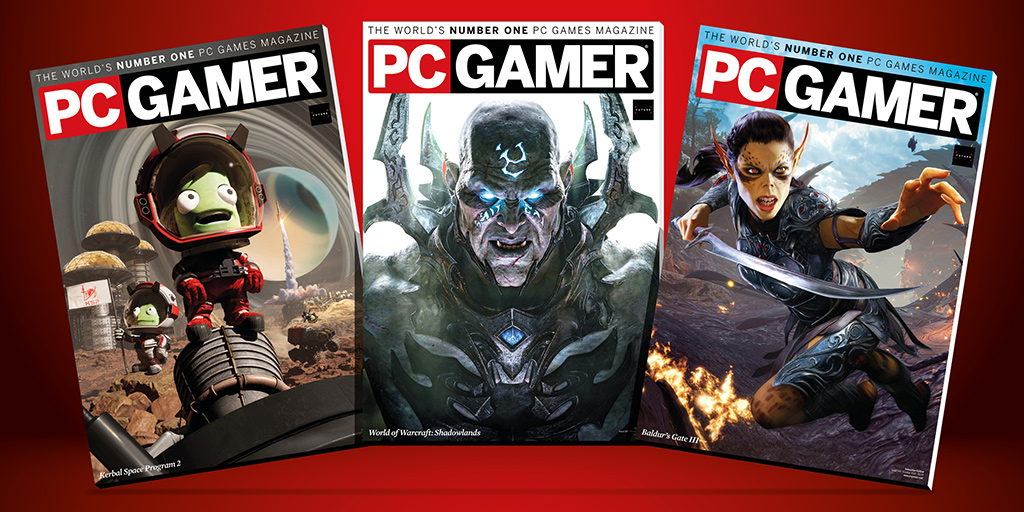From Half-Life to Borderlands: the rise of Gearbox Software
How Gearbox invented the loot-shooter.

An enormous caterpillar has taken up residence in the waste disposal sector of Black Mesa. Unlike many of its peers from the planet Xen, the monstrous pit worm cannot be dislodged with machine-gun fire or experimental weapons. Instead, like the toxic materials that used to occupy this space, it must be flushed: first by turning the main pressure valve, then by hitting the emergency override button on the primary pump's gearbox. Valve and Gearbox.
It's Gearbox Software's Hideo Kojima moment; an early effort to establish its own authorial voice, and to list its name among the greats. For a few years after Half-Life: Opposing Force, the studio's name would continue to follow Valve's, on another two expansion packs, and in the credits of Counter-Strike. But even then, a distinct identity was beginning to form.
Where Valve's Half-Life had been a solitary, at times lonely journey through the bowels of Black Mesa, Opposing Force cast you as a US Marine—and Marines fight in squads. In an era when functional companion AI was rare, Gearbox threw in two or three friendlies at a time, and gave them specialities: the medic asks you to hold still as he injects health points into your veins; the engineer lights his welding torch with a cigarette and kicks down doors. Though unnamed, these comrades on a mission gone wrong had big personalities. They offered not just extra firepower, but company.
Squad shootin'

That design became the foundation for Gearbox's first original series, Brothers in Arms. While its period setting and poignant tone clearly owed plenty to Band of Brothers, broadcast just a few years earlier, its squad tactics marked a meaningful evolution from Opposing Force. Soldiers could be directed to cover, ordered to suppress enemies, or led in a charge on the enemy's position. As in Half-Life, they were vulnerable: a foolish decision could see them bleed out in French fields, and this time you were aware of their names, fears and families back home.
That's one thread of Gearbox's history; the one that drove their success through the noughties, and the reason you know Randy Pitchford's name. But another was developing simultaneously in the background, and would grow to engulf the studio entirely.
Developers often begin their careers working on ports—the work-for-hire jobs that see games prepared for release on extra platforms. It's work that's often overlooked as uncreative, but porting Halo: Combat Evolved to the PC had a profound effect on Gearbox. It set the path for its next project, a first-person shooter which would feature recharging shields, driveable vehicles, and underground secrets on an alien world. And digging into the data-driven architecture of Halo's code sparked a new way of thinking at the studio, encouraging it to experiment with procedurally generated weapons. Gearbox never built its own Halo game, though at one stage it was set to do just that; instead, its familiarity with Halo led straight to Borderlands.
Crossing the border

The idea, at the time, was new: to apply the RNG, levelling and loot cycle of Diablo to an FPS, without losing the immediate and dynamic feedback players had felt in Half-Life. The AI teammates that had made Opposing Force and Brothers in Arms memorable became co-op partners. Like the Marines, Borderlands' four characters each had distinct roles, but now they came from the realm of fantasy RPGs: tank, mage, ranger, and berserker. Tactics were something you coordinated over voice chat, rather than with a right click on the mouse.
Keep up to date with the most important stories and the best deals, as picked by the PC Gamer team.
Borderlands proved itself to be incredibly forward-thinking, predicting the direction of shooters over the next decade, and opening up a money seam that has sustained the studio to this day. It also seemed to close off a part of Gearbox's identity, to the frustration of long-term fans. When a new Brothers in Arms sequel was announced at E3 in 2011, it more closely resembled Borderlands than its parent series, eschewing historical authenticity for “tall tales”.
Four player characters, including a Texan with a cattle prod and an Irishman with a penchant for tasering Nazis in the balls, would clear levels punctuated by silly set-pieces, like a runaway ferris wheel. Such was the backlash against this new vision for Brothers in Arms that Furious 4 simply never came out.
Gearbox still retained enough nostalgia for the '90s to buy up Duke Nukem Forever, taking on its attendant baggage and inevitable disappointment. Yet when the studio won the licence for Aliens: Colonial Marines, the perfect opportunity to follow a squad through an Opposing Force-style gibfest, it failed to rise to the occasion. Meanwhile, the Borderlands games enjoyed critical acclaim. It was as if one part of Gearbox's personality had swallowed the other.
Genre-blended

Gearbox's most fascinating failure, in a competitive field, has been Battleborn. The intent was to do for MOBAs what Borderlands had for action-RPGs—folding the highly tactical mess of cooldown abilities, teamfights and friendly minions into the form of a first-person shooter. The resulting game is far from meritless, despite the shrieking dialogue which, like Borderlands, leans much too hard on idioms to get cheap laughs. It boasts a striking palette of deep reds, and hand-animated cutscenes set to old-school hip hop.
But Battleborn was a victim of Gearbox's own success. While the studio had once been ahead of the curve, laying the ground for loot-shooters, Battleborn was an idea any other developer could conceive of—in large part thanks to Borderlands. At release, Battleborn was famously overshadowed by Overwatch, with Gearbox looking on as its nascent community defected to Blizzard's rival game. Since then, it's threatened to become a mono-studio, built solely around the success of one series.
It's not that Battleborn was derivative—it's that the DNA of Gearbox has become the DNA of triple-A games at large. That's to the studio's enormous credit—but it might be time for the developer to reach back into its past and dust off the tactical squad shooter that I would like to see. That way it can escape from the zeitgeist it's built and start standing out again, rather than simply repeating itself over and over again.
Jeremy Peel is an award-nominated freelance journalist who has been writing and editing for PC Gamer over the past several years. His greatest success during that period was a pandemic article called "Every type of Fall Guy, classified", which kept the lights on at PCG for at least a week. He’s rested on his laurels ever since, indulging his love for ultra-deep, story-driven simulations by submitting monthly interviews with the designers behind Fallout, Dishonored and Deus Ex. He's also written columns on the likes of Jalopy, the ramshackle car game. You can find him on Patreon as The Peel Perspective.


